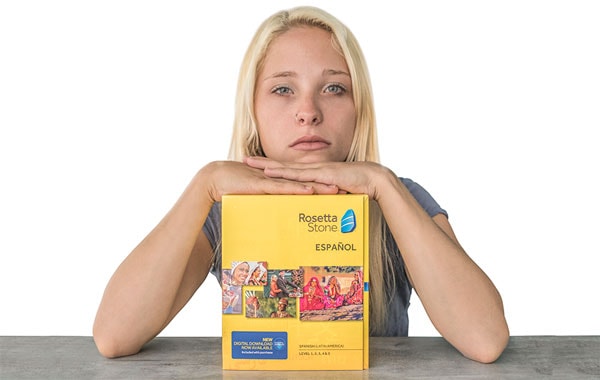

Over 25 years of language learning experience has taught Rosetta Stone one thing: everyone has the ability to learn to read, write, and speak a language with confidence. Rosetta Stone’s brief, 10-minute language lessons are designed to help you learn in just this way––first teaching basic words and short phrases, then teaching longer phrases, teaching vocabulary for real-world situations, and always emphasizing accurate pronunciation.Learning a language can be an experience that transforms your life. Once you have acquired the basic Spanish words and short phrases and their pronunciation, you’ll find it to be a natural transition to learning the longer phrases that make up so much of everyday Spanish conversations. TruAccent is a powerful tool for helping you learn and speak the Spanish language. It’s also adjustable, which allows you to tweak your accent as needed. TruAccent compares your voice to native and non-native speakers-in real-time-so you get the feedback you need for the most accurate pronunciation. Rosetta Stone helps you get the pronunciation right in a snap with our TruAccent™ speech engine. Some Spanish language experts counsel new Spanish learners to practice making the “tt” sound, as it sounds in the English word butter. This distinct sound is formed by tapping the tip of the tongue on the roof of the mouth, about a third of the way back in the mouth. As one example, the letter r is pronounced differently and takes some practice for most new learners. It’s worth pointing out that Spanish does have some characteristics that can make proper pronunciation of some Spanish words a bit challenging for new learners. This proven and practical approach to learning Spanish will help you to acquire the ability to comfortably and confidently engage in conversation with locals. That’s why experts advise that you focus on learning to understand and accurately pronounce commonly used Spanish words and short phrases. Then these beginners become frustrated when they find themselves unable to understand or speak in everyday Spanish conversations. Doing this will help you understand how the language is used in everyday situations by the estimated 437 million Spanish speakers worldwide.Īll too often, new language learners get sidetracked trying to memorize long lists of Spanish vocabulary words and phrases. So whether it’s for travel, business or everyday life, you can hit the ground running by first familiarizing yourself with the pronunciation of basic Spanish words and short phrases.

Other people decide to learn the language because they have plans to travel to or work in any one of the 20 countries around the world which have named Spanish as the official language. After all, Spanish is prominent in much of today’s most popular entertainment and restaurants. Many people make the commitment to learn Spanish because they find that they frequently encounter the language in their day-to-day life. That way, you’ll be ready to handle any situation with ease and confidence. So it’s not just about the features, but what you’re able to do because of them. What makes Rosetta Stone effective is that we prepare you to use your new language in your everyday life. Rosetta Stone’s Dynamic Immersion® methodology teaches you the language, not just the words. Even better, the Spanish alphabet is made up of the exact same 26 letters you already know and only three extra letters you’ll need to learn: ch (chay), ll (elle), and ñ (eñe). Unlike English, with its often-curious rules for spelling and pronunciation, Spanish has a clear system of pronunciation with very few irregularities. That’s why you’ll find English words like “canal” that look and sound identical or nearly-identical in French ( canal), Italian ( canale), and Spanish ( canal).

While English is technically a Germanic language, it has also been profoundly influenced by both Latin and the lingual off-shoots of Latin. Known as cognates, these words have a significant number of letters or sounds in common. When languages have a similar origin, they invariably share words and phrases that are closely related to one another. The same goes for the days of the week and times of year. Many of the Spanish words for months probably sound similar to words you already use-especially if you already speak languages like English, French, or Italian. Starting with January, the names of the Spanish months go as follows:


 0 kommentar(er)
0 kommentar(er)
